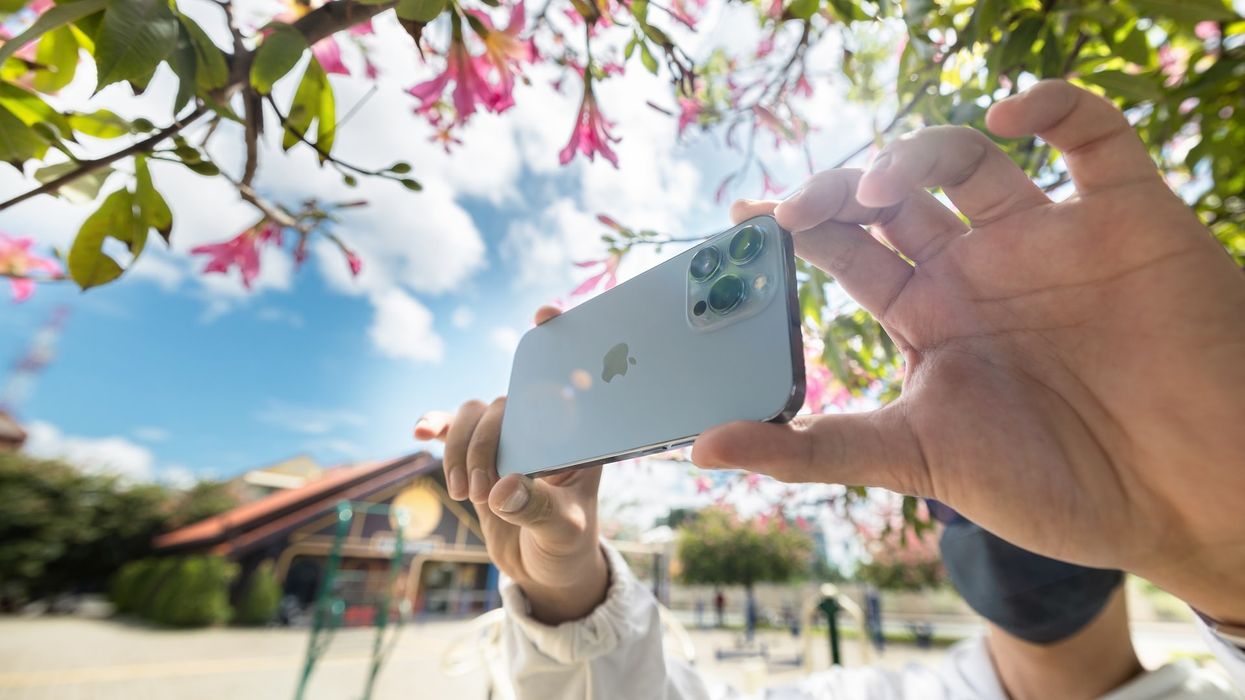Is Shooting on an iPhone 13 Pro Max Better Than a Pro Video Camera?
Apple iPhone 13 Pro has received some amazing upgrades. We take a look at how filmmakers can benefit from these updates.

The inclusion of ProRes and Cinematic Mode has elevated the smartphone to a fairly usable production tool. But let’s talk about the elephant in the room first.
No, you shouldn’t replace all of your cameras with an iPhone. Sure, it’s a pretty amazing tool when it comes to creative work, but there are still limitations when you compare the Apple smartphone to a dedicated camera.
However, the leaps and bounds in technology have made the iPhone a unique piece of kit for filmmakers at all budget levels. It’s widely available and now comes with ProRes, a professional-level codec only found in cameras specifically made for video and cinema work.
But how does the iPhone 13 Pro Max stack up against professional cameras, and why are filmmakers like Steven Soderbergh using smartphones for their projects?
iPhone vs. a Pro Video Camera
The Apple iPhone has been a hot topic in the film community for some time. Ever since its video capabilities have taken center stage in Hollywood movies and festival darlings.
YouTuber and filmmaker, Gene Nagata, who also goes by Potato Jet is known for his iPhone comparison videos. In his most recent outing, he took the iPhone 13 Pro Max with ProRes and Cinematic Mode. Nagata compared it to the Canon C70 and Sony A7S III. What did he discover? Check out his video below.
While the iPhone has amazing video capabilities, in most cases you can still tell the difference between it and a dedicated camera.
Issues like poor low-light performance and sharpening, as well as inconsistent shutter speed, are all dead giveaways in some instances. But there are other instances where the differences between the iPhone and dedicated camera are hard to tell apart.
Which is why we should talk about—
Why You Should Use an iPhone
Not everyone can afford a prosumer or cinema camera to shoot their movies on. Lenses are also expensive to own or to rent.
On the other hand, filmmakers already either own an iPhone or know someone who does. Apple shipped over 200 million iPhones in 2020 alone. Yes, most of them aren’t going to be the 13 Pro Max with ProRes, but any iPhone from the last two or three generations will be able to provide creatives with robust video options.
There’s even a dedicated app specifically for filmmakers. FiILMiC Pro only costs $14.99 and offers 10-bit SDR on the iPhone 12 series, as well as ProRes on the iPhone 13 Pro and 13 Pro Max. You can go out and shoot a short film on your iPhone right now. No need to rent a bunch of gear.
Heck, you can even shoot a feature. Just ask Sean Baker, director of Tangerine. He shot the entire thing on three iPhone 5S smartphones. Then premiered it at Sundance.

Remember we mentioned Steven Soderbergh? He’d rather only shoot on iPhone from now on. His film Unsane was shot entirely on an iPhone 7. The budget? $1.5 million. It made almost 10 times that in theaters. That kind of ROI would make any studio exec salivate.
iPhones even had a hand in saving a television production during the initial COVID-19 quarantine. Mythic Quest on Apple TV+ used around 40 iPhones to film an entire episode when the cast and crew were stuck at home.
We’re not saying smartphones are going to take over film and television productions. Not even close. But the amazing tools that smartphones provide, give much-needed access to filmmakers. It opens the door to creativity that more expensive gear tends to keep shut.
Check out some of our recent tips on smartphone filmmaking here. And if you do plan on making your next film on a smartphone, just make sure your mom knows to not call you during a take.










![Ethos, Pathos, Logos: 20 Effective Ways to Advertise [Infographic]](https://nofilmschool.com/media-library/ethos-pathos-logos-20-effective-ways-to-advertise-infographic.jpg?id=34064614&width=600&height=600&quality=90&coordinates=560%2C0%2C0%2C0)

